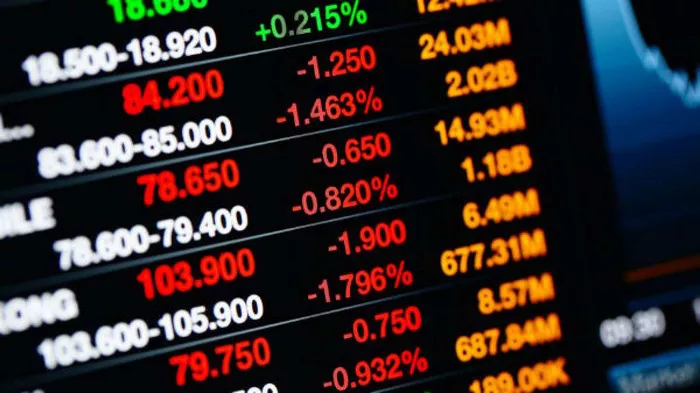The futures market is a dynamic and influential component of the global financial landscape, providing traders and investors with a platform to speculate on the future price movements of various assets. Understanding the intricacies of the futures market is essential for anyone looking to navigate this complex terrain successfully.
Defining Futures Contracts
At its core, a futures contract is a financial agreement between two parties to buy or sell an asset at a predetermined price on a specified future date. These standardized contracts typically involve commodities such as agricultural products, energy resources, financial instruments, or stock indices. Unlike options, futures contracts obligate both the buyer and the seller to fulfill the terms of the contract, irrespective of the market price at the time of expiration.
Key Participants in the Futures Market
The futures market involves various participants, each playing a unique role in shaping its dynamics. Hedgers, such as farmers and manufacturers, use futures contracts to mitigate the risk of adverse price movements in the underlying assets. Speculators, on the other hand, aim to profit from price fluctuations by betting on future market trends. Market makers facilitate liquidity by constantly quoting both buy and sell prices, while arbitrageurs exploit price differentials between related markets.
Understanding Leverage in Futures Trading
One distinguishing feature of futures trading is the use of leverage, which enables traders to control a more substantial position with a relatively smaller amount of capital. Leverage amplifies both potential profits and losses, making it a double-edged sword. While it enhances the profit potential, it also exposes traders to increased risk. It is crucial for market participants to comprehend the concept of leverage and deploy it judiciously to avoid significant financial exposure.
Navigating Futures Exchanges
Futures contracts are traded on organized exchanges, providing a regulated platform for buyers and sellers to transact. These exchanges, such as the Chicago Mercantile Exchange (CME) and Eurex, play a vital role in ensuring the smooth functioning of the futures market. They establish standardized contract specifications, oversee the trading process, and implement risk management measures. Participants can access futures contracts by opening accounts with brokerage firms that are members of these exchanges.
The Role of Clearinghouses
Clearinghouses act as intermediaries between buyers and sellers in the futures market, assuming the counterparty risk of each trade. When a futures contract is executed, the clearinghouse steps in to guarantee the performance of the contract. This risk mitigation mechanism ensures the integrity and stability of the futures market by reducing the likelihood of default. Traders are typically required to post margin, a partial payment of the contract value, to cover potential losses and fulfill their financial obligations.
Types of Futures Contracts
Futures contracts come in various forms, catering to the diverse needs of market participants. Perpetual contracts have no fixed expiration date, allowing traders to maintain positions indefinitely. Traditional futures contracts, with fixed expiration dates, are prevalent in commodities and financial markets. Additionally, contracts can be categorized based on the type of underlying asset, such as equity index futures, commodity futures, or currency futures. Each type of contract has its unique characteristics, risk factors, and market dynamics.
Factors Influencing Futures Prices
Understanding the factors that influence futures prices is crucial for making informed trading decisions. Supply and demand dynamics for the underlying asset, geopolitical events, economic indicators, and market sentiment all play a role in shaping futures prices. Interest rates and inflation can also impact futures prices, particularly in financial markets. Traders need to stay abreast of both microeconomic and macroeconomic factors that could influence the markets in which they are active.
Trading Strategies in the Futures Market
Various trading strategies are employed by participants to navigate the futures market successfully. Trend-following strategies involve identifying and capitalizing on established market trends. Contrarian strategies, conversely, involve taking positions against prevailing market trends, anticipating a reversal. Spread trading entails simultaneously buying and selling related futures contracts to profit from price differentials or changes in the relative value of the contracts. Traders can also utilize options on futures as part of more complex strategies, adding flexibility to their risk management approaches.
Risk Management in Futures Trading
Given the inherent volatility of the futures market, effective risk management is paramount. Traders can employ several risk mitigation techniques, including setting stop-loss orders to limit potential losses and take-profit orders to secure profits at predetermined levels. Diversification, or spreading investments across different assets or contracts, helps reduce concentration risk. Moreover, traders must be mindful of their use of leverage, ensuring that it aligns with their risk tolerance and overall trading strategy.
Analyzing Futures Market Data
The availability of real-time market data is a critical component of successful futures trading. Traders utilize various technical analysis tools, such as charts, indicators, and patterns, to interpret market data and identify potential entry and exit points. Fundamental analysis, which involves assessing the broader economic, geopolitical, and industry-specific factors, can complement technical analysis and provide a comprehensive view of market conditions.
Futures Market Regulations
Regulations play a pivotal role in maintaining the integrity and transparency of the futures market. Regulatory bodies, such as the U.S. Commodity Futures Trading Commission (CFTC) and the Financial Conduct Authority (FCA), enforce rules and standards to safeguard market participants and ensure fair and orderly trading. Traders should be aware of the regulatory framework in the jurisdictions in which they operate and adhere to compliance requirements.
Conclusion
Understanding the futures market is a multifaceted endeavor that requires a combination of knowledge, experience, and strategic acumen. Whether you are a hedger seeking to manage risk, a speculator aiming to profit from market movements, or an investor diversifying your portfolio, the futures market offers a diverse array of opportunities. By comprehending the fundamental concepts, key players, and risk management strategies, market participants can navigate the futures market with confidence, unlocking its potential for profit and contributing to the vibrancy of global financial markets.


